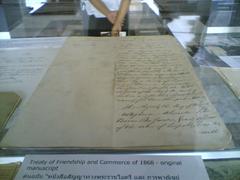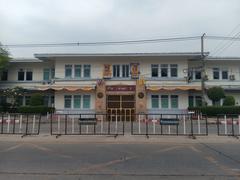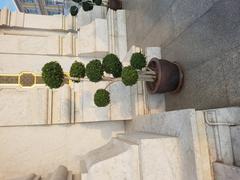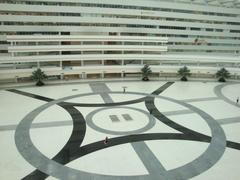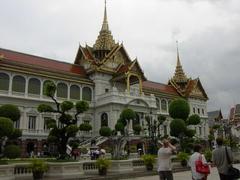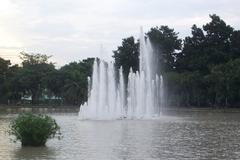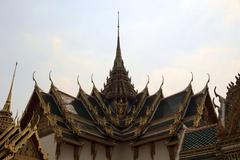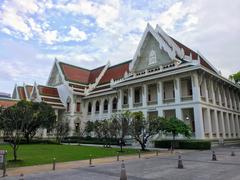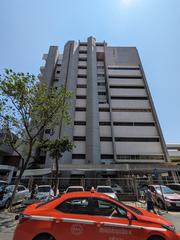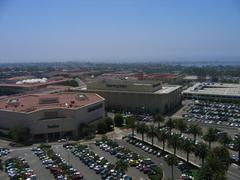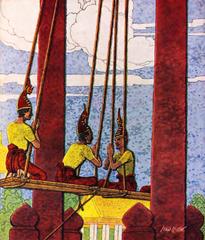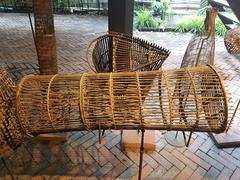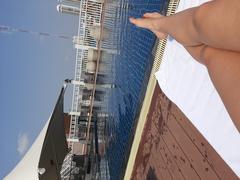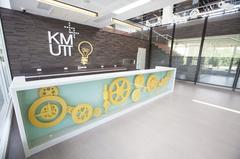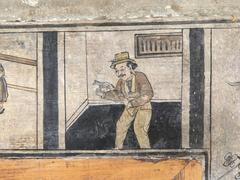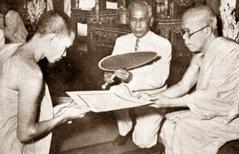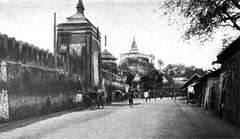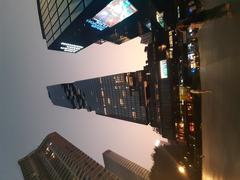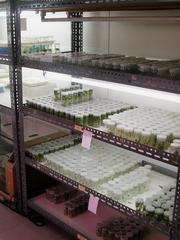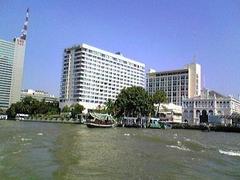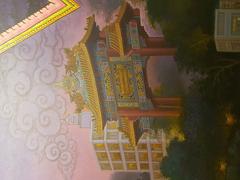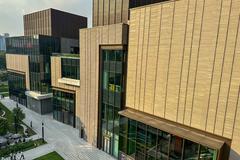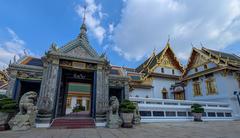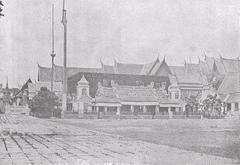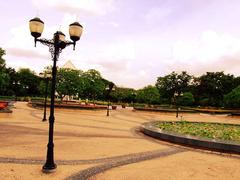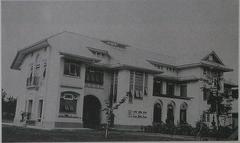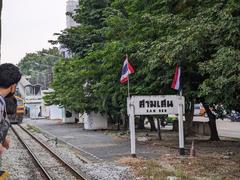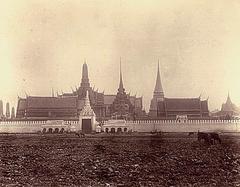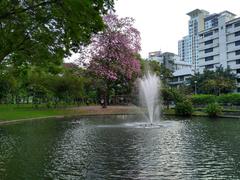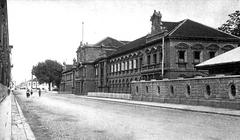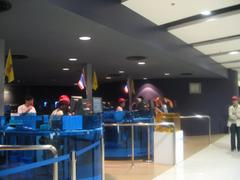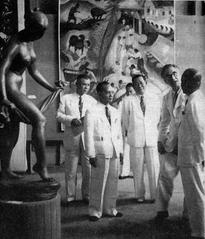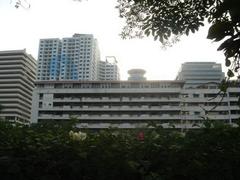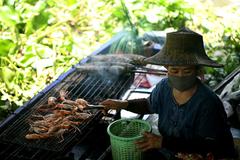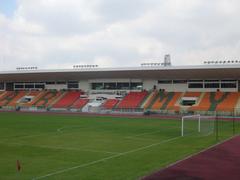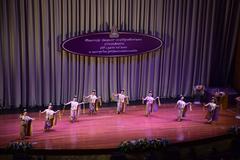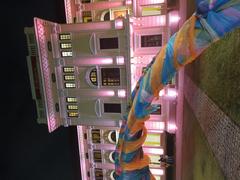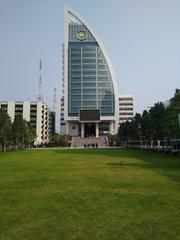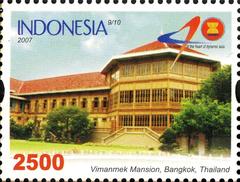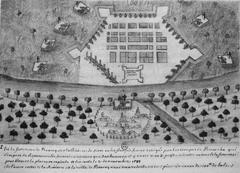Chulalongkorn University Museum of Natural History: Visiting Hours, Tickets, and Visitor Guide
Date: 04/07/2025
Introduction
The Chulalongkorn University Museum of Natural History is a cornerstone of scientific learning and cultural enrichment in Bangkok. Established in 1954 at Thailand’s oldest university, the museum brings together education, research, and public engagement to present the nation’s natural wonders. Its collections—spanning zoology, botany, paleontology, and conservation—highlight Thailand’s extraordinary biodiversity and serve as a resource for students, scientists, and travelers alike. With accessible exhibits, interactive displays, and educational programming, the museum stands out as a must-visit destination among Bangkok’s historical sites. Its central location, ease of access via public transportation, and nominal or free entrance fees ensure an inclusive experience for all. For the latest updates on visiting hours, guided tours, and special exhibitions, consult the museum’s official resources (Chulalongkorn University Museum of Natural History, Trip.com, Phuket Times).
Museum Overview
History and Academic Role
Founded as an academic resource in 1954 within the Faculty of Science, the museum originated from Chulalongkorn University’s commitment to advancing scientific knowledge and education (Chulalongkorn University Museum of Natural History). Early collections, compiled through faculty and student fieldwork, focused on cataloguing Thailand’s unique fauna and flora. Over time, these collections have expanded to over 10,000 specimens, supporting both academic research and public education.
The museum plays a crucial role in university curricula, offering hands-on experiences in biology, zoology, and environmental science. Through specimen-based instruction, students gain practical insights, while researchers access invaluable reference materials. The museum’s public outreach extends to workshops, school programs, and interactive exhibits, nurturing environmental awareness and stewardship in visitors of all ages.
Strategic Partnerships and Contributions
National and International Collaborations
The museum’s influence extends through robust collaborations:
- Nationally, it partners with organizations such as the Department of National Parks, Wildlife and Plant Conservation (DNP) and cooperates with leading Thai universities for research and conservation projects (DNP Thailand).
- Internationally, it connects with institutions like the Smithsonian National Museum of Natural History (USA), the Natural History Museum (UK), and the National Museum of Nature and Science (Japan), enabling expertise exchange and global biodiversity initiatives (Smithsonian Institution, Natural History Museum London, National Museum of Nature and Science Japan).
Through these efforts, the museum advances scientific research, contributes to conservation policies, and promotes Thailand’s ecological legacy on a global stage.
Exhibitions and Educational Highlights
Permanent and Special Exhibits
Visitors can explore a diverse range of displays:
- Endangered Species: View the rare white-eyed river martin and learn about conservation efforts for Thailand’s unique wildlife (Wikipedia).
- Thai Turtles and Softshells: A collection highlighting the country’s freshwater and marine reptiles (Phuket Times).
- Insects and Mollusks: Engaging displays of insects, snails, and other invertebrates, appealing to children and entomology enthusiasts (Trip.com).
- Mammals, Birds, Fish, and Reptiles: Comprehensive overviews through preserved specimens and skeletal displays.
Educational activities include guided tours, citizen science programs, workshops, and annual exhibitions such as the “Biodiversity of Thailand” showcase. The museum also supports digital initiatives like virtual tours and online educational resources.
Visitor Information
Hours, Tickets, and Location
- Opening Hours: Tuesday to Sunday, 9:00 AM – 4:30 PM. Closed on Mondays and public holidays (Trip.com).
- Admission: Free or a nominal fee (typically around 50 THB) for general visitors; free for students and staff.
- Location: 2nd floor, Biology Building, Chulalongkorn University main campus, Pathum Wan District, central Bangkok.
- How to Get There: Easily accessible via BTS Skytrain (Siam or National Stadium stations), MRT (Sam Yan station), local buses, and taxis (Chulalongkorn University Map, Phuket Times).
Accessibility & Facilities
- Wheelchair access is provided; ramps and elevators are available.
- Restrooms are located within the Biology Building.
- No on-site café or gift shop, but the campus and nearby Chamchuri Square offer dining options.
- Photography is permitted in most areas; flash and tripods may be restricted.
Visitor Experience and Tips
- Language: Most signage is in Thai; translation apps or local guides enhance understanding (InTravel).
- Duration: Most visitors spend 1–2 hours exploring the museum (InTravel).
- Best Time to Visit: Mornings on weekdays for a quieter experience.
- Nearby Attractions: Bangkok Art and Culture Centre, Jim Thompson House, Queen Saovabha Memorial Institute, Chamchuri Square, Wat Hua Lamphong, MBK Center, and Siam Square are all within walking distance (Trek Zone).
Frequently Asked Questions (FAQ)
Q: What are the museum’s opening hours?
A: Tuesday to Sunday, 9:00 AM – 4:30 PM. Closed on Mondays and public holidays.
Q: Is admission free?
A: Yes, admission is free or low-cost; check the official website for current details.
Q: Is the museum wheelchair accessible?
A: Yes, with ramps and elevators available.
Q: Are guided tours available?
A: Yes, guided tours can be arranged for groups and individuals; booking in advance is recommended for peak times.
Q: Can I take photographs inside?
A: Photography is generally allowed, but flash and tripods may be restricted.
Q: What is the best way to get there?
A: Use BTS Skytrain (Siam/National Stadium), MRT (Sam Yan), or local buses.
Plan Your Visit
- Check for special exhibitions and events on the museum’s official website or trusted platforms.
- Combine your visit with other campus museums or nearby cultural sites for a full day of discovery.
- Download the Audiala app for real-time updates, guided tours, and exclusive content.
Summary
The Chulalongkorn University Museum of Natural History is a vital destination for those seeking to understand Thailand’s natural legacy. With its extensive collections, educational initiatives, and accessible location, the museum serves as a hub for learning, research, and community engagement. Its strategic partnerships, both national and international, elevate its role in biodiversity conservation and scientific advancement. Whether you are a student, researcher, family, or traveler, the museum promises an enriching experience at the heart of Bangkok’s cultural landscape (Chulalongkorn University Museum of Natural History, Trip.com, Phuket Times).
Sources and Further Reading
- Chulalongkorn University Museum of Natural History
- Trip.com: Museum Reviews and Visitor Tips
- Phuket Times: Visitor Experience and Practical Information
- Trek Zone: Chulalongkorn University Museum of Natural History
- InTravel: Museum Information
- Wikipedia: Chulalongkorn University Museum of Natural History
